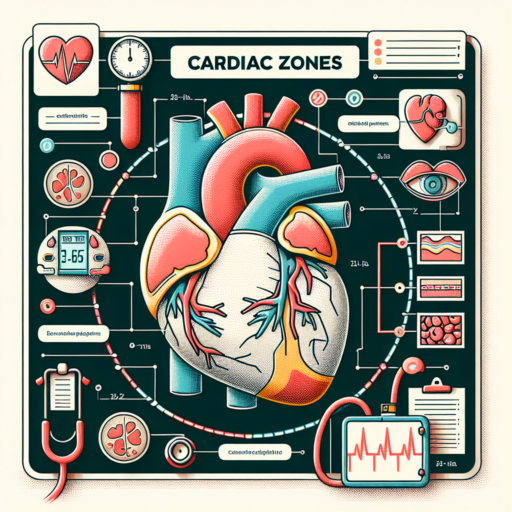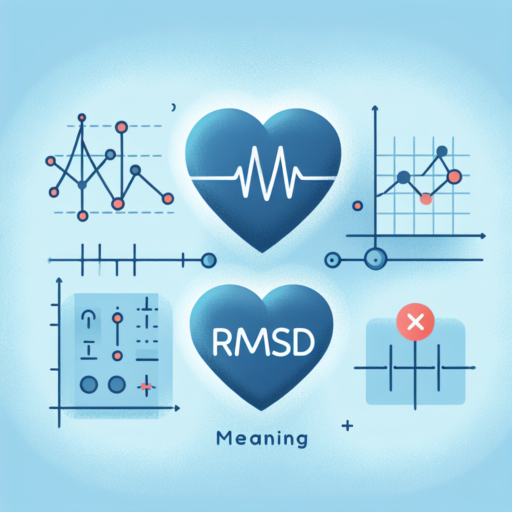Understanding RMSSD: A Comprehensive Introduction
Root Mean Square of the Successive Differences (RMSSD) is a vital metrics in the field of heart rate variability (HRV) analysis. It plays a crucial role in understanding the intricate dynamics of heart rate fluctuations over time. RMSSD primarily measures the short-term variability in heart rate, making it an essential indicator of the parasympathetic nervous system’s activity, which is responsible for rest and digest functions of the body.
The significance of RMSSD lies in its ability to provide insights into an individual’s cardiac health and stress levels. By analyzing the RMSSD values, health professionals can gauge the balance between the sympathetic and parasympathetic nervous systems. This balance is crucial for maintaining a state of equilibrium within the body’s various systems. High levels of RMSSD are often associated with a heightened parasympathetic activity, suggesting a relaxed state, whereas lower levels may indicate stress, anxiety, or other potential health concerns.
For athletes and individuals focused on optimizing performance and recovery, RMSSD serves as a valuable tool. It assists in designing training programs that balance intense activities with adequate rest periods. Monitoring RMSSD allows for the adjustment of training loads to prevent overtraining and enhance overall performance. The ease of measuring RMSSD through modern wearable technology has made it increasingly accessible for individuals seeking to improve their health and wellbeing.
What Does High RMSSD Mean for Your Heart Health?
Understanding the significance of high RMSSD is crucial when considering your heart health. RMSSD, which stands for Root Mean Square of the Successive Differences, is a key metric used in heart rate variability (HRV) analysis. This measure gives insights into the autonomic nervous system’s functioning, particularly highlighting the parasympathetic nervous system’s activity. A high RMSSD typically indicates a robust and responsive parasympathetic nervous system, which is responsible for relaxation and recovery processes in the body.
When discussing heart health, a high RMSSD value is often interpreted as a sign of cardiovascular fitness and resilience. This is because a higher HRV, denoted by a higher RMSSD, suggests that the heart is capable of adapting efficiently to stress and varying demands. In the realm of preventive healthcare and well-being, professionals consider a high RMSSD a favorable indicator, suggesting that the heart can switch gears from a state of rest to activity and vice versa smoothly and without undue stress.
It’s important, however, to understand the context in which RMSSD values are evaluated. While a high RMSSD is generally seen as beneficial, it’s essential to consider it alongside other metrics and personal health indicators. For individuals engaged in fitness or those monitoring their heart health proactively, gauging RMSSD can provide valuable insights into their overall cardiovascular condition, helping to tailor lifestyle interventions that promote optimum heart function and long-term well-being.
Improving Your Lifestyle: The Connection Between High RMSSD and Well-being
The term RMSSD stands for Root Mean Square of the Successive Differences and is a vital measurement used in heart rate variability (HRV) analysis. Understanding and increasing your RMSSD can be a fundamental step towards enhancing your overall well-being. High RMSSD values are often indicative of a healthy, resilient cardiovascular system, reflecting the body’s ability to manage stress effectively. This connection between high RMSSD and well-being is crucial for anyone looking to improve their lifestyle.
One of the primary ways in which a higher RMSSD contributes to wellness is through stress management. When your body shows a high RMSSD, it indicates a greater balance between the sympathetic and parasympathetic branches of your autonomic nervous system. This balance is essential for relaxation, recovery, and emotional regulation. Activities that promote relaxation, such as meditation, yoga, and deep breathing exercises, can significantly increase your RMSSD, thereby improving your body’s stress response and enhancing your overall quality of life.
Moreover, incorporating regular physical activity into your routine is another effective strategy for boosting RMSSD. Exercise not only improves heart health but also increases HRV, reflecting improved autonomic nervous system functionality. Cardiovascular exercises, strength training, and even walking have been shown to enhance RMSSD. By adopting a more active lifestyle, individuals can experience profound improvements in both physical and emotional well-being, underscoring the strong connection between high RMSSD and a better quality of life.
Interpreting RMSSD: Key Factors Behind High Measurements
Understanding the nuances of Root Mean Square of the Successive Differences (RMSSD) is crucial when assessing heart health and autonomic nervous system functionality. High measurements in RMSSD indicate a high level of heart rate variability (HRV), which is often associated with good cardiovascular fitness and stress resilience. However, interpreting these figures requires a comprehensive understanding of the key factors that can influence RMSSD levels.
One primary factor is physical fitness. Individuals with higher levels of cardiovascular fitness typically exhibit higher RMSSD values, reflecting their heart’s efficiency and ability to respond to stress and physical demands adaptively. This highlights the importance of regular exercise and maintaining an active lifestyle as a means to improve HRV and overall heart health.
Another aspect to consider is stress and relaxation. High RMSSD measurements can also indicate a well-managed stress response, where the body successfully navigates between states of stress and relaxation through efficient autonomic regulation. Techniques such as mindfulness, meditation, and breathing exercises have been shown to positively influence HRV by enhancing the body’s relaxation response.
Lastly, sleep quality plays a significant role in influencing RMSSD numbers. Adequate and high-quality sleep supports autonomic function and can lead to higher HRV scores. Disruptions in sleep patterns, on the other hand, can compromise heart rate variability, underscoring the importance of addressing sleep issues for optimal cardiovascular health.
High RMSSD: Indications for Athletes and High-Performance Individuals
The Root Mean Square of the Successive Differences (RMSSD) is a key metric used in heart rate variability (HRV) analysis, providing valuable insights into the autonomic nervous system’s function, particularly concerning parasympathetic activity. For athletes and high-performance individuals, understanding and monitoring RMSSD values can be pivotal in maximizing their training outcomes and recovery processes. A high RMSSD is often indicative of a well-balanced autonomic nervous system and a high level of cardiovascular fitness, both critical elements for peak performance.
High RMSSD levels are generally seen as a positive indication in the context of athletic performance and training. They suggest the athlete’s body is well-recovered and ready to take on high-intensity activities. Moreover, it points toward an efficient stress response system, allowing the athlete to cope better with physical and psychological stressors. Such an efficient response is crucial during competitions, where the ability to remain calm and collected can make a significant difference in performance output.
Moreover, for high-performance individuals, a consistent track of high RMSSD readings can signal properly managed training loads and optimal recovery practices. It underscores the importance of rest and recuperation in any rigorous training regimen, prompting athletes to focus on recovery strategies as much as on physical training. In doing so, it helps in preventing overtraining syndrome (OTS), reducing the risk of injury, and ensuring sustainable athletic development and performance enhancement over time.
Certainly! Focusing on the H2 topic and incorporating SEO-friendly content, here’s a concise and structured approach:
Tools and Techniques: How to Accurately Measure Your RMSSD
Understanding your body’s response to stress and relaxation techniques is crucial for managing overall well-being. Root Mean Square of the Successive Differences (RMSSD) is a reliable metric that gauges this balance by assessing heart rate variability (HRV). Selecting the right tools and employing effective techniques for measuring RMSSD can enhance the precision of your readings, offering deeper insights into your autonomic nervous system’s health.
Choosing the Right Tool for RMSSD Measurement
The first step in accurately measuring RMSSD is selecting a high-quality HRV monitor. Devices ranging from specialized heart rate monitors to advanced wearable technology like smartwatches provide varying degrees of accuracy. For the most reliable results, opt for devices that offer raw HRV data access and are validated by scientific research. It’s essential to ensure that the device can specifically measure RMSSD, as not all HRV indicators provide this insight.
Techniques for Accurate RMSSD Assessment
Equally important to the tool is the technique applied during measurement. For consistent and accurate RMSSD readings, adhere to these best practices:
- Maintain a consistent routine: Measure your RMSSD at the same time each day, preferably in the morning before engaging in any strenuous activities.
- Control your environment: Ensure that the conditions under which you measure your RMSSD are similar each time, with minimal disturbances and in a settled state.
- Understand the data: Familiarize yourself with interpreting RMSSD figures to track trends over time, rather than focusing on single, standalone measurements.
By integrating these tools and techniques in your daily wellness routine, you can achieve a more nuanced understanding of your nervous system’s functionality and make informed decisions to optimize your health and stress resilience.
Advancing Beyond High RMSSD: What Next Steps Should You Consider?
When you’ve reached a point where your RMSSD (Root Mean Square of the Successive Differences) scores consistently indicate a high level of heart rate variability (HRV), it signals a robust autonomic nervous system and overall good health. But what comes after achieving this milestone? Understanding the avenues for further improvement or maintenance of your physiological well-being is crucial. As you venture into advanced territory beyond a high RMSSD, specific strategies can help you sustain or even enhance your achievements.
Optimizing Lifestyle Choices for Sustained RMSSD Levels
Maintaining a high RMSSD requires continual attention to lifestyle choices that impact heart health and stress levels. Key areas include nutrition, physical activity, and stress management. Ensuring a diet rich in omega-3 fatty acids, incorporating both aerobic and strength training exercises, and adopting regular mindfulness or meditation practices can help preserve the autonomic balance reflected in your RMSSD scores.
Advanced Biofeedback and Neurofeedback Techniques
If you’re looking to not just maintain but further improve your HRV, exploring advanced biofeedback and neurofeedback methods could be the next step. These techniques allow for more precise control over your body’s physiological responses, offering a pathway to fine-tune your autonomic nervous system‘s activity. By engaging in specialized training sessions, you can learn to increase your RMSSD through controlled breathing, emotional regulation, and cognitive retraining exercises.
The journey beyond high RMSSD does not end with maintaining your current level. It extends into experimenting with and implementing nuanced health strategies tailored to your body’s needs. By focusing on lifestyle optimization and advanced biofeedback techniques, you’re not only safeguarding your current achievements in heart rate variability but also setting the stage for further physiological and psychological growth.
High RMSSD: Common Misconceptions and Scientific Clarifications
When discussing high Root Mean Square of Successive Differences (RMSSD), a metric used to evaluate heart rate variability (HRV), it’s crucial to separate fact from fiction. Many people assume that a higher RMSSD always indicates superior cardiovascular fitness or a more robust autonomic nervous system. However, scientific clarifications provide a more nuanced understanding of what high RMSSD values truly mean and their implications for health and wellness.
Myth 1: High RMSSD Is Exclusively Beneficial
One of the most prevalent misconceptions is that a high RMSSD is universally beneficial, suggesting an optimal level of health and well-being. While it’s true that RMSSD can reflect aspects of autonomic flexibility and resilience, excessively high values might not always signal optimal health. In certain contexts, particularly in the presence of specific medical conditions, a very high RMSSD might actually indicate underlying issues or an imbalance in autonomic function.
Myth 2: RMSSD Values Are Consistently Accurate
Another assumption often made is the unwavering accuracy of RMSSD measurements. It’s essential to understand that various factors, including stress levels, sleep quality, and even the time of day, can significantly influence RMSSD values. This variance underscores the importance of consistent measurement conditions and, if possible, professional guidance to interpret these numbers accurately within the context of an individual’s overall health profile.
In addressing these misconceptions, it’s vital to approach high RMSSD readings with a balanced perspective. Recognizing the complexity of autonomic nervous system assessment and the role RMSSD plays in that process helps in making informed decisions regarding health and lifestyle adjustments. Remember, an individual’s RMSSD should not be viewed in isolation but rather as part of a comprehensive assessment of well-being.
Case Studies: Real-Life Impacts of High RMSSD on Health and Fitness
The connection between high RMSSD (Root Mean Square of the Successive Differences) and improved health and fitness outcomes has been highlighted in numerous case studies. Research demonstrates that an increased RMSSD is often indicative of a well-functioning, adaptive nervous system, offering fascinating insights into our body’s resilience and recovery capabilities.
Improved Cardiovascular Health: An interesting case study revealed that individuals with a higher RMSSD value tend to have better cardiovascular health. This is because high RMSSD levels are associated with efficient heart rate variability (HRV), which is linked to reduced stress on the heart and a lower risk of developing heart-related diseases. This case underscores the potential of RMSSD as a predictor for cardiovascular wellness, urging a broader understanding and integration of heart rate variability monitoring in routine health assessments.
Enhanced Athletic Performance: Another case study focuses on athletes, comparing those with higher versus lower RMSSD scores. The findings suggest that athletes with higher RMSSD levels exhibit improved performance, quicker recovery times, and greater resilience to physical stress. This is particularly important in the realm of competitive sports, where optimal physical condition and speedy recovery are paramount. Thus, monitoring RMSSD could offer a competitive edge, serving as a tool for tailoring training regimens to individual athletes’ recovery needs.
No se han encontrado productos.
FAQs on High RMSSD: Expert Answers to Your Most Common Questions
Understanding the intricacies of Heart Rate Variability (HRV) metrics can be complex, and the topic of a high RMSSD (Root Mean Square of Successive Differences) often generates a plethora of questions. RMSSD, a key indicator of parasympathetic activity in the autonomic nervous system, has garnered attention for its implications on physical fitness, stress management, and overall health. In answering the most common inquiries, we aim to demystify the nuances of high RMSSD readings and their significance.
What does a high RMSSD indicate? Fundamentally, a high RMSSD suggests a strong vagal tone, meaning your body is efficiently managing its relax and recover responses. This can be particularly beneficial for athletes in recovery phases, individuals managing stress, or anyone interested in their cardiovascular health. However, interpreting these scores should be done within the context of one’s overall health and lifestyle metrics for a comprehensive analysis.
Is a high RMSSD always a sign of good health? While a high RMSSD is often associated with positive health outcomes, it’s crucial to remember that exceedingly high values might not always be advantageous. For instance, unusually high readings could indicate potential issues such as a misbalance in the autonomic nervous system or other underlying health conditions. Hence, consulting with a healthcare professional for a thorough evaluation is advised when RMSSD scores deviate significantly from normative values.




